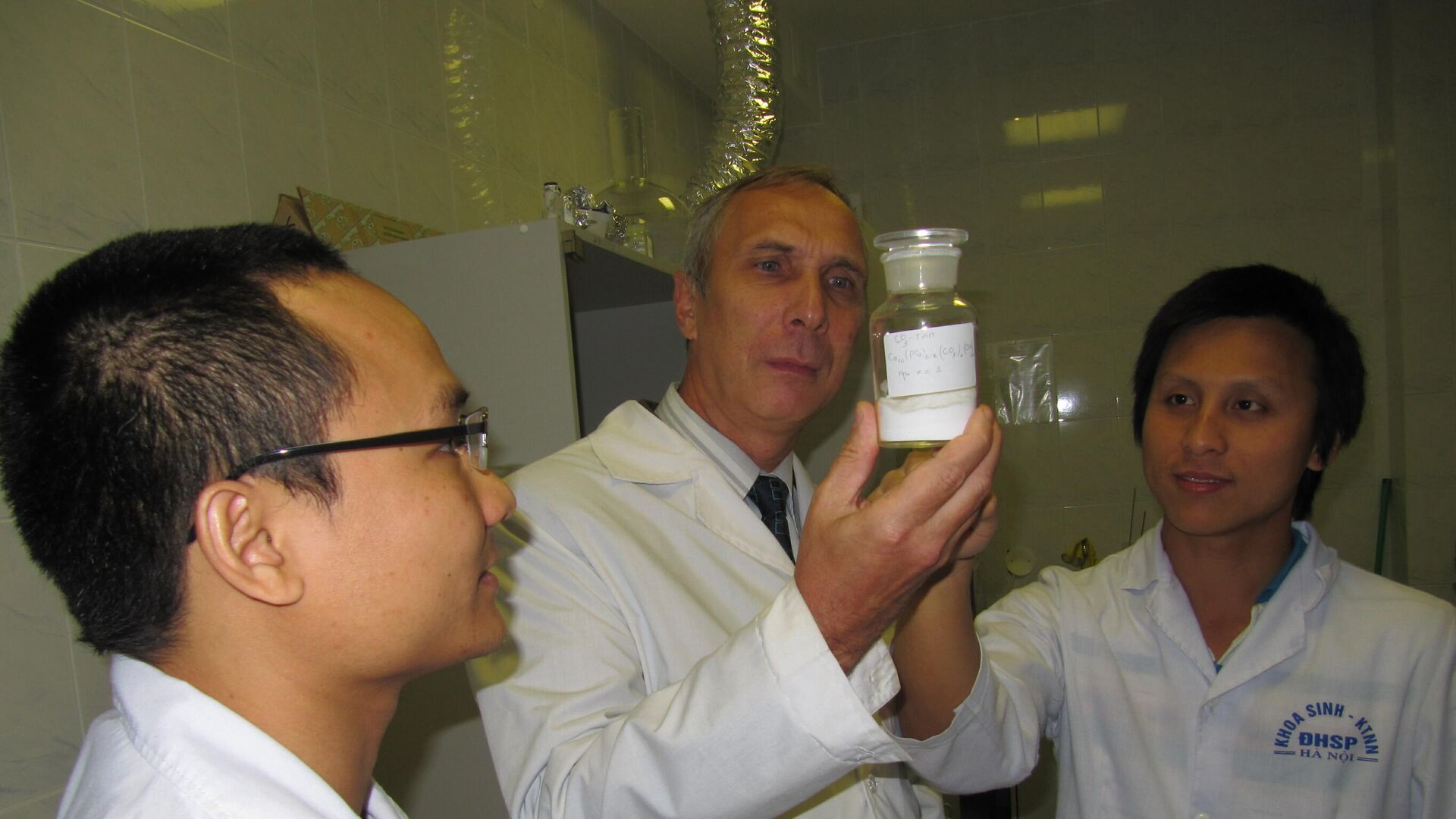Scientists Apply 'Immortality Mushroom' to Synthesise Nanogold
10:45 GMT 07.12.2021 (Updated: 13:32 GMT 06.08.2022)

© Photo : Belgorod State University (BelSU)
Subscribe
Belgorod State University (BelSU) researchers together with colleagues from Vietnam and Iran have developed an environmentally friendly and cost-effective technology for producing novel biogenic silver and gold nanoparticles.
The scientific study of BelSU showed that novel biogenic silver (AgNPs) and gold nanoparticles (AuNPs) could be used as catalysts in the global problem of cleaning the environment from harmful phenols, as well as in the development of bactericidal medicines and nanosensors for photometric determination of heavy metals. The results were published in the Chemosphere journal.
Precious metals nanoparticles are widely used in various industries, including medicine, agriculture, electronics, and bioengineering. Scientists are interested in silver and gold nanoparticles because of their high catalytic, antimicrobial, and photo-electro-sensitive activity, as well as their biocompatibility, said Mikhail Trubitsyn, professor at the BelSU Department of General Chemistry.

microsampling extraction
© Photo : Belgorod State University (BelSU)
At the same time, he said, the widely used physicochemical methods of producing nanoparticles have significant drawbacks: the use of hazardous chemicals, high-energy consumption, complex preparation schemes, and high costs.
An international team of scientists has developed an environmentally friendly and cost-effective technology for producing precious metals nanoparticles using readily available natural raw materials. The chemists have proposed synthesising gold and silver nanoparticles using the Ganoderma lucidum fungus. The mushroom is popular in traditional Asian medicine for its antioxidant, antimicrobial, anti-inflammatory, and anti-tumour properties, and has even been nicknamed the “mushroom of immortality”.
“Basically, the mushroom micro fragments act as a substrate sorbent media for silver or gold ions. As a result of sorption, we obtained colloidal particles 50 nanometres in size, which have high bactericidal, catalytic, and photoelectric sensor activity”, Mikhail Trubitsyn told Sputnik.
Tests have confirmed an outstanding catalytic activity of the nanoparticles, which lasts up to five times in their use. Thus, it takes nine minutes to convert 98% of the harmful impurities in nitrophenol in water into aniline, which can be collected and used in production. The reapplication of the nanoparticles results in the conversion of 95% of the substance.
According to the scientists, another important applied research result is that the particles can play the role of a nanosensor for environmental monitoring. In particular, they proved to be an effective indicator in the colorimetric detection of the concentration of Fe3+ions in aqueous solutions.

A study on the effectiveness of new agents as indicators in the photo colorimetric determination of Fe3+ ions in model solutions
© Photo : Belgorod State University (BelSU)
Furthermore, Ganoderma lucidum novel biogenic silver (AgNPs) nanoparticles showed strong antimicrobial activity against several bacterial strains, including Escherichia coli, Pseudomonas aeruginosa, Bacillus subtilis, and Staphylococcus aureus.
Scientists attribute the fact that silver nanoparticles have more pronounced catalytic and antibacterial properties than gold nanoparticles to the specific nature of the bioorganic layer and the size of the particles themselves.
The scientific team of Vietnamese researchers from the Ho Chi Minh City University of Food Industry, Ho Chi Minh City University of Education, Van Lang University, Industrial University of Ho Chi Minh City, Duy Tan University, and Iranian scientists from the Quchan University of Technology carried out the international research led by Technical Sciences PhD Mikhail Trubitsyn, professor at the BelSU Department of General Chemistry. Cooperation with other countries is one of the priority areas of NRU BelSU's development strategy under the Priority 2030 National Programme.


